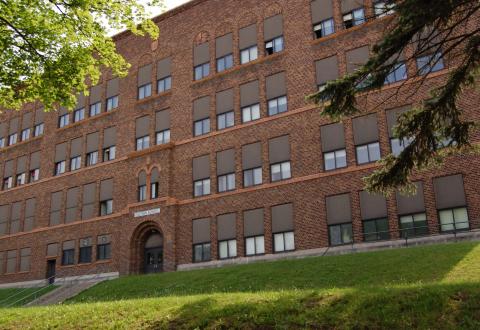Housing, Class, & Highland Park

A very reputable non-profit developer (ICCF) is attempting to convert an abandoned neighborhood school into housing. Anyone familiar with neighborhood politics and housing discussions in the once mighty United States of America knows the arguments that will be played out; you've seen this movie before, the plot arc is as packaged as a 1990s rom-com.
However, this is the first time I've gotten to watch it on my own turf; the school is just down a hill from my home, in my own neighborhood - Highland Park [Grand Rapids, MI]. I've closely watched development projects both succeed and fail in adjacent neighborhoods - expecting it would come to us eventually. It has taken awhile; Highland Park is not a place where much happens. Despite the much discussed housing "crisis" the neighborhood has added two housing units in roughly a decade.
The process is not interesting. But I feel that the comments I've heard are. They are interesting because they belie the big dirty secret: we are not middle class. The housing being proposed by the non-profit is in the category of "Missing Middle"; which means, for the lay person, housing units which are attainable to someone making 70% - 120% AMI. For Highland Park, using the neighborhood AMI, that is ~$21k/yr - ~$38k/yr. It is notable that the AMI of Highland Park is lower, by ~$4k/yr, than that of the overall city. The comments are interesting as they mostly concern who might move into the neighborhood. I get it, I've experienced lousy neighbors. But, mostly implied, is the assumption that the people who will move into this development will be poor. And, of course, poor people bring problems, right? But, let's look at the numbers. The people who will move into this housing is us.
The economic breakdown of Highland Park looks like this:
| Income Range | Households | % at-or-below |
|---|---|---|
| 0 - 10K | 132 | 8% |
| 10K - 20K | 139 | 17% |
| 20K - 30K | 214 | 31% |
| 30K - 40K | 277 | 50% |
| 40K - 50K | 229 | 65% |
| 50K - 60K | 154 | 75% |
| 60K - 75K | 133 | 84% |
| 75K - 100K | 152 | 94% |
| 100K - 125K | 51 | 97% |
| 125K - 150K | 29 | 99% |
| 150K - 200K | 7 | 100% |
Half of the existing households in the neighborhood would be the target market for this development. Another 1 out of 4 are within the next tier. We have nothing to fear. These new residents will fit right in.
As I listen to other conversations which happen around the city I suspect I hear the same category problem. The housing conversation is inextricably tangled up in America's inability to honestly discuss class. The people in need of this housing are not someone else from somewhere else, they are us, they are our neighbors and family.
Addendum: Yes, there has also been questions about parking and traffic. For this post I am not interested in those except where they intersect with the premise above. The site in question is within the walk shed of two transit routes. There are always some who will dismiss the relevance of this as "nobody rides the bus". It is pointless to argue with anyone who casually refers to 11+ million annual riders as "nobody". But given the reality that auto-related debt is the fastest growing category of debt for American households perhaps the conversations around transportation are just as entangled within our concepts of class.
